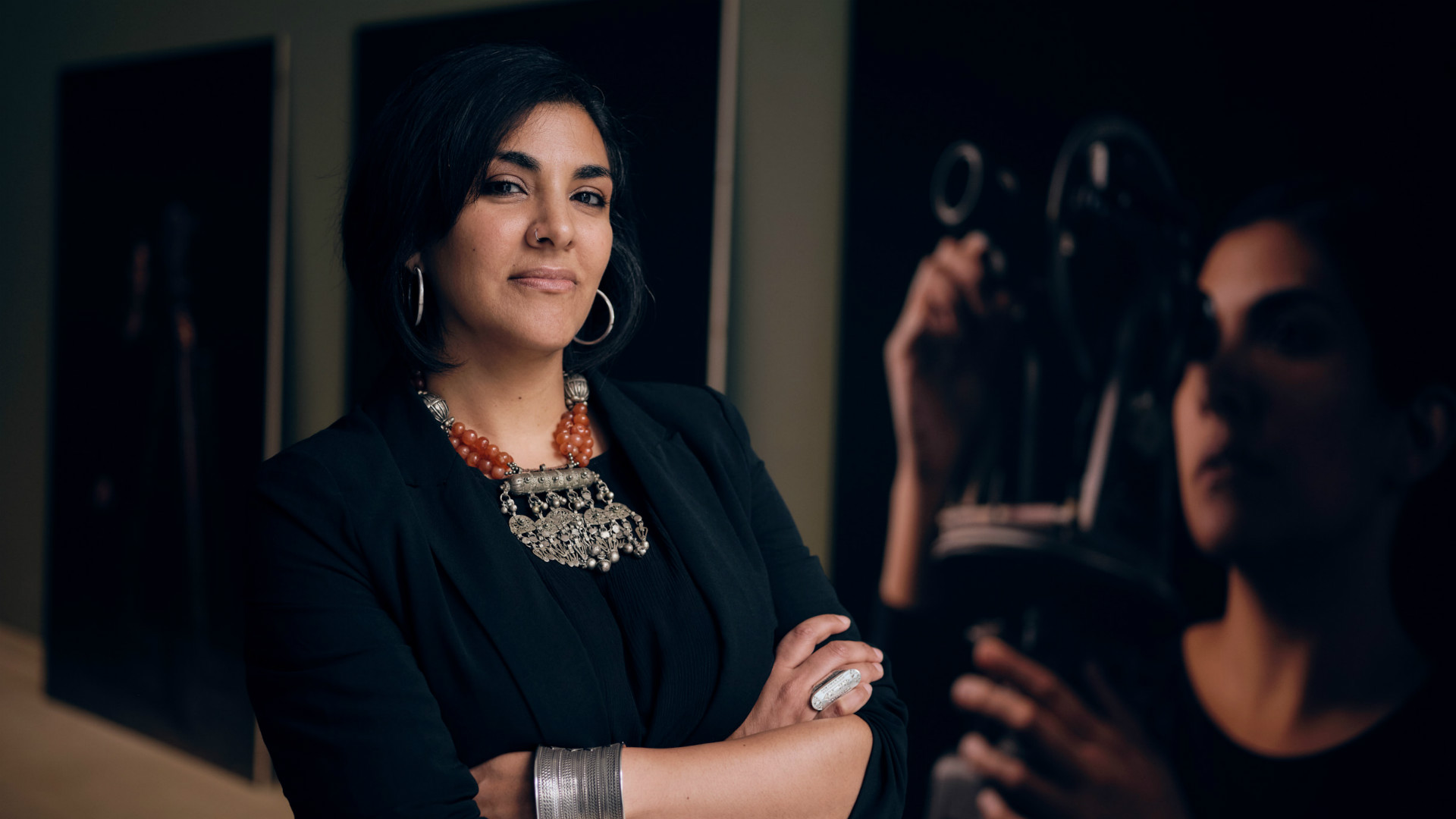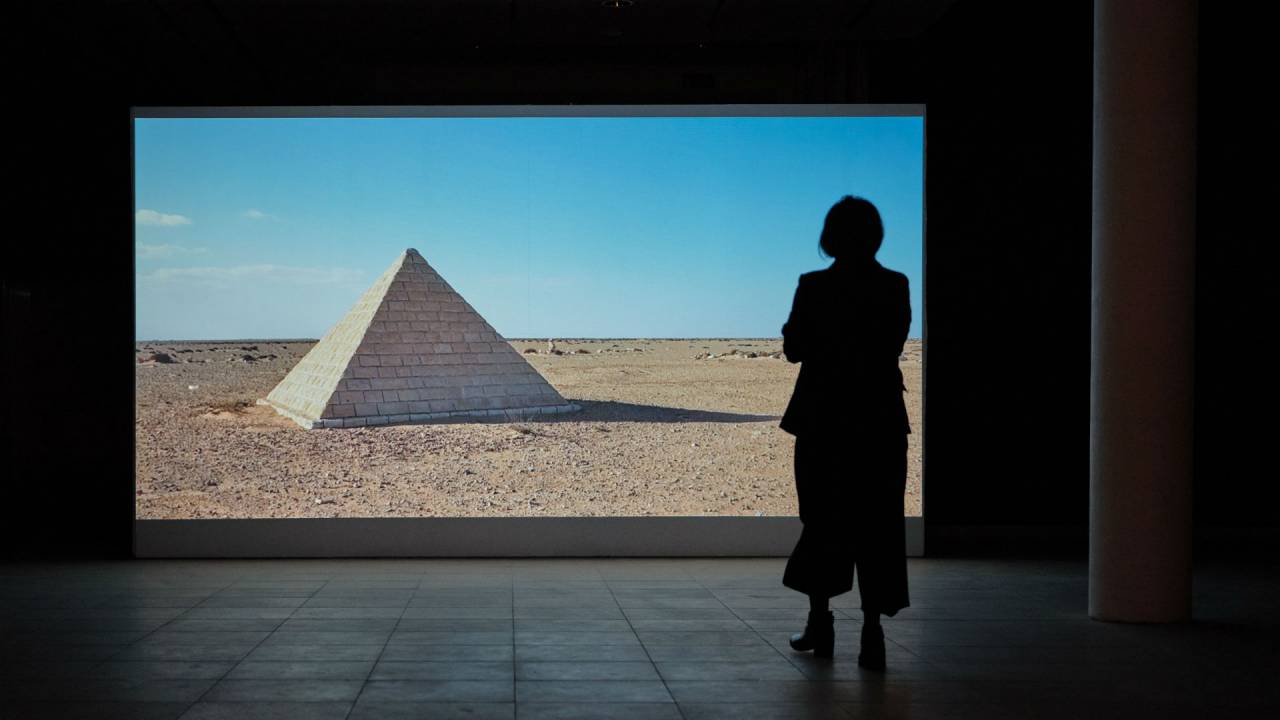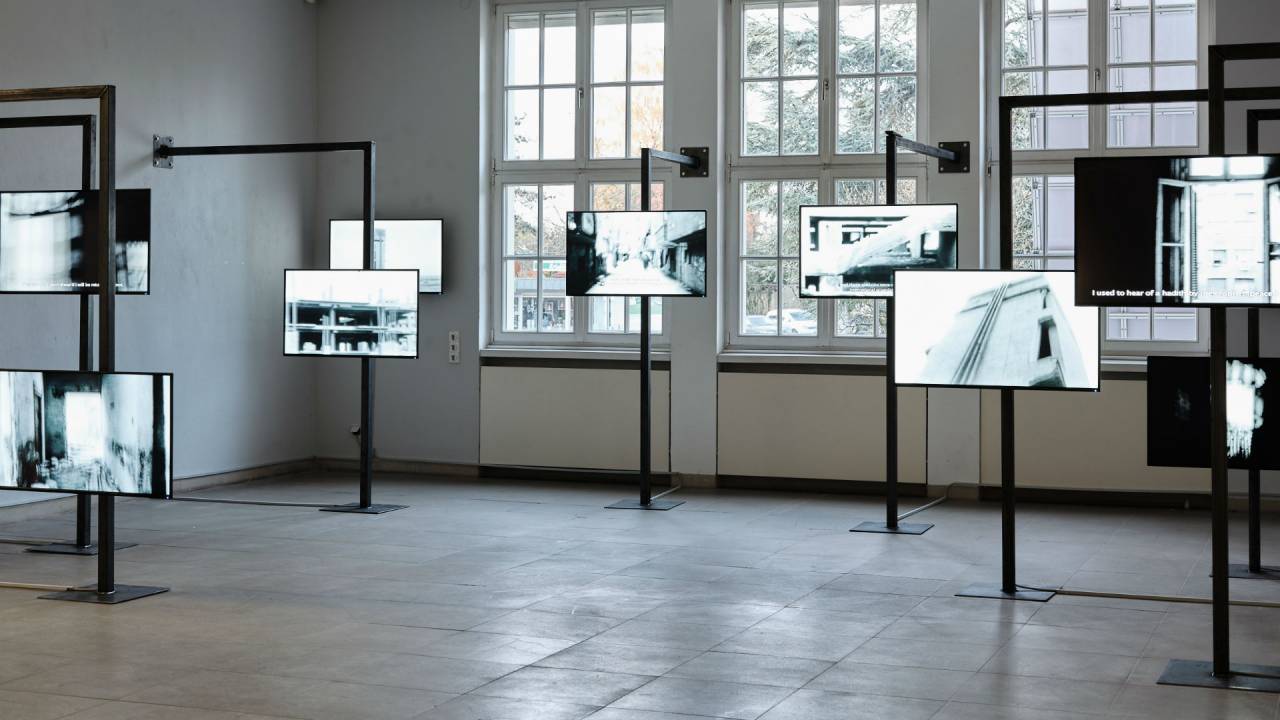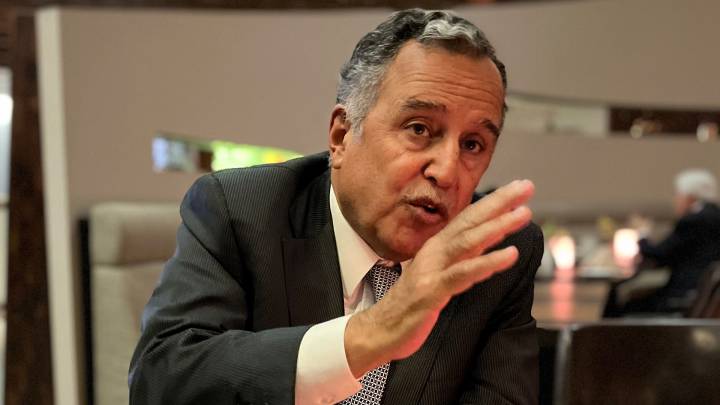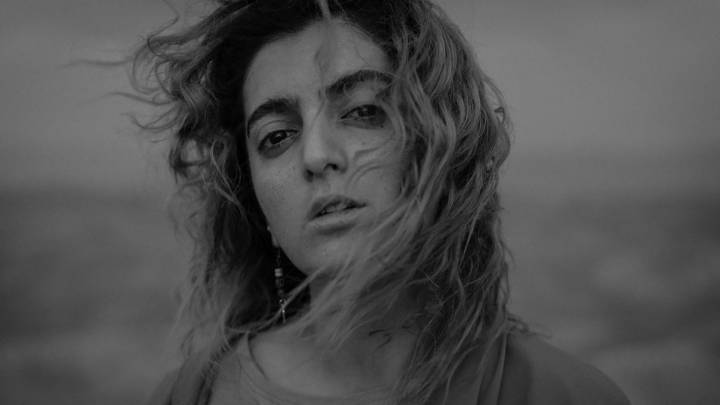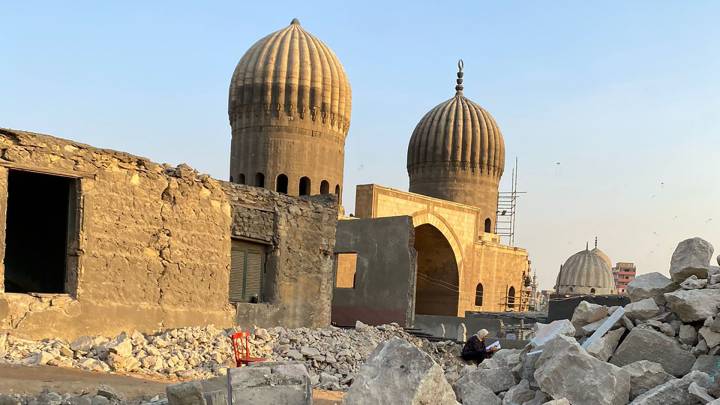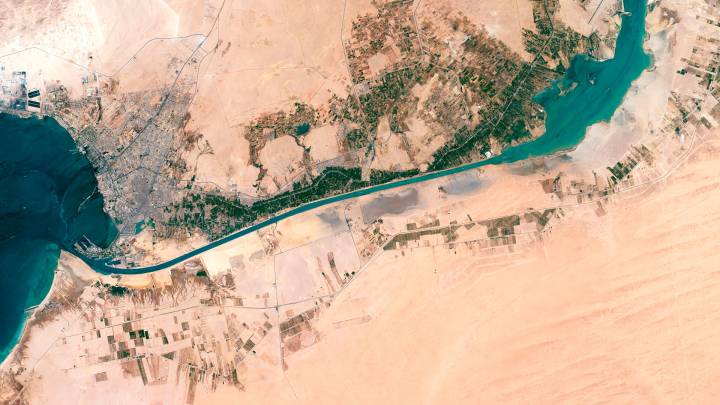Heba Y. Amin talks to Calum Humphreys about her recent exhibition “Fruit from Saturn”. They discuss Germany’s toxic legacy of land mines in North Africa, the modern autocrat’s fascination for megaprojects, and walking watermelons through Cairo.
zenith: Why is your new exhibition called “Fruit from Saturn”?
Heba Y. Amin: The exhibition’s title, “Fruit from Saturn”, refers to an anthology written by the French-German poet Yvan Goll, which includes a particular poem from the book about the atomic bomb, called Atom Elegy. The original version of the poem is generally optimistic as it speaks to the utopian potential of atomic energy. Then when the atomic bomb was dropped on Hiroshima, Goll rewrote the poem to reflect the new devasting reality. That's what ended up being published in 1946. The museum has the original unpublished version, which we’ve displayed for the first time in my exhibition.
What is the relevance of Goll’s work today?
In comparing the two versions, I was struck by how Goll’s writing reveals our inability to conceive of the destruction that accompanies our own manufacturing of ideologies. Decades later, we still find ourselves engrossed by techno-fantasies like space colonisation and other absurd visions of the future that both alarm us and favour the privileged.
Your exhibition features both the schlager musician and actor, Roberto Blanco, and replica of a mini Nazi pyramid. What connects the two?
The original pyramid is a memorial in northern Egypt for the German fighter pilot, Hans-Joachim Marseille. The Cuban Tunisian-born schlager singer, Roberto Blanco, plays his butler in the 1950s’ film, Der Stern von Afrika, about Marseille’s career. The filmmakers completely erased the butler’s narrative: he was a prisoner of war, a South African soldier named Matthew Letuku. His onscreen likeness “Mathias” instead provides the comic relief entertainment in an otherwise heavy story.
What does the depiction of these two characters tell us?
The film depicts the relationship between Hans-Joachim Marseilles and Mathias as one of friendship and not as the exploitative power dynamic between a soldier and his captive. This is also how it was predominantly written about in German literature and, therefore, used by the German government, presumably to relay a less cynical story from the Nazi era. The German Africa Korps were often differentiated from the Nazis: those were the “good” Nazis, like Erwin Rommel and Marseilles. Even though the North Africa Desert Campaign was very much both a fascist and a colonial endeavour, Germany often writes itself out of this episode of colonial history. Fighting in the desert automatically implied an emptiness of the land - uninhabited, unoccupied, and ripe for the taking. The Bedouins, the Tuaregs, the nomads, those who actually lived there, were all written out of that history.
How does your exhibition address those silences?
What I try to address with my exhibition is how local populations - especially the marginalised - are forced to ventriloquise the narratives of Europeans as they guide tourists around memorials while their own narratives have been simply written out of history. There are 8,000 people who've been killed since the campaign in North Africa ended in 1942 because of landmines - 19million of them - that were laid during the Second War World in northern Egypt, making Egypt one of most mined countries in the world. Rommel himself named this expanse of land that he is partially responsible for infesting “The Devil’s Garden”. To this day, no one has been held accountable for the landmines.
Why is the German government not taking steps to remove the landmines?
There have been many proposals over the years to develop this region through infrastructural development in collaboration with Germany. I suppose it was implied that the landmines would be dealt with then. When none of those plans materialised, sporadic EU-funded projects were launched to support mine detectors and provide demining training with the hope of clearing the area of land mines. The most recent of these initiatives, North West Coast Development Plan, ended in 2017.
Why have efforts so far failed to demine the area?
It is a very expensive and slow process, so a significant amount of the weapons still remain. When you ask locals in El Alamein about the landmines, people are reluctant to talk about it. I found it very difficult to do this research. It was apparent to me that the topic was sensitive without a thorough understanding of why. Until recently, the landmines posed as an obstacle to accessing gas, oil, minerals and underground water. Today, there is a massive developmental plan underway that necessitates their removal. A cooperation agreement to enhance Egypt’s demining capability was signed between the Egyptian government and the Geneva International Centre for Humanitarian Demining (GICHD) on 14 November, coincidentally publicised on the day of my exhibition opening. But what of the local residents? We have yet to see where they feature in this story.
What do you think of the relationship between technology and colonialism?
That is exactly what my exhibition is about, that very relationship. It addresses the ways in which we still regard technology as this utopian phenomenon that will save our future. And yet we have seen the many ways in which it has been at the forefront of perpetuating violence to control people, especially people in the Global South. I want to show the hypocrisy and the absurdity embedded in what colonialism flaunted as “civilized” culture. Many of these “civilized” countries today are the biggest manufacturers of weapons of warfare, stemming from colonial projects.
How does your work explore these themes?
My work flips these narratives and ideologies upside down. I survey German landscapes as an African and Middle Eastern woman, I revisit 20th Century European proposals like draining the Mediterranean Sea and flip the perspective, I build a replica of a Nazi pyramid and bring it to Germany. Through a tongue-in-cheek approach, my interest is in what kind of conversations these works can conjure. Can they help people see our contemporary moment differently?
Why are autocratic regimes particularly fascinated by mega projects?
It's megalomania! They are obsessed with the idea of leaving their mark on the world by physically shifting geography. I came across the proposal of draining the Mediterranean Sea through the archive of Herman Sörgel, a German engineer who proposed one version of it in the early 20th century. Germany is not even connected to the Mediterranean! I discovered that he was one of many to propose the same project, from 19th century French geographers to the CIA in the 1950s.
What did you make of such a bizarre idea when you first learnt about it?
I was struck by the audacity of suggesting such a project without taking into consideration the millions of people who would be adversely affected by it. As part of my own artistic research, I gave a public speech in Malta which re-proposed the original idea but from the other side, geographically speaking. What could Africans gain from proposing such a project? I intentionally plagiarise other historical speeches, stealing the words of authoritarian figures proposing terraforming projects. The idea is to claim their narratives and write them out of history. I also look at other contemporary mega projects like the Istanbul Canal project, the new Silk Road project, as well as Saudi Arabia’s new multi-billion-dollar megacity Neom and borrow from the language of these “techno-utopian” visions. I began to better understand the close resemblance between the language of authoritarianism and fascism to the ideas of technological “progress”, and that the latter also often implies power and control.
Why was archiving the Speak2Tweet initiative from the Egyptian revolution so important?
As far as I know, I'm one of the only people who made the effort to preserve this unique archive. When the Egyptian revolution started and the Internet was shut down, the Speak2Tweet platform emerged, allowing people to record messages by phone that would automatically post to Twitter. There was something about those voices. I was listening to them obsessively because I was here in Germany at the time. They weren't about mobilising people but served as a platform for people to express emotion in a way that I had never encountered before. It felt like these voices were somehow emerging from the post-apocalyptic settings of a city I witnessed collapsing since my childhood. We were confronted with the failures of the nation state and, for a split second, people suddenly had a voice and a platform. We quickly discovered, however, that the same tools of democratic expression were later used against the very people who spoke truth to power.
Mada Masr was recently raided. Do areas of free expression exist in Egypt today?
It is clear that we need to find other strategies to express ourselves. It’s a dire situation I would say, in Egypt and elsewhere. We have to find other creative tools to speak.
What role does humour play in your work?
There is something inherently powerful about how humour works. It brings people in, especially when talking about difficult topics. You'll notice that much of my work deals with quirky narratives - whether it's a stork captured in Egypt in 2013 and accused of espionage or a Nazi pyramid memorialising a Luftwaffe pilot or an outlandish proposal to drain the Mediterranean Sea. Even though they’re real, I use them as metaphors or allegories that stand in for larger more complex ideas. I’m fascinated by how they can be used as a mechanism for storytelling, to pull people in.
And where do the watermelons fit in?
I performed an experiment in 2016 after several people were arrested for taking photographs in public space in Cairo. I walked through the city with a watermelon on a leash, and documented it with a camera. Would I be deemed threatening when photographing something so absurd that it cannot be taken seriously? It’s obviously not a litmus test, but it was an interesting question that I decided to act upon at that moment in time. Could this be a viable strategy? I am not so sure. But I use my work to test how much critical engagement I can get away with. Walking a watermelon in Berlin would obviously not hold the same weight, or meaning even.
Does Berlin deserve its image as a paradise for exiles from the Middle East?
There’s definitely something about Berlin in particular that has attracted so many creatives, rebels and thinkers. A long history of a culture of resistance has lived here for quite some time. I found that really attractive when I first moved here in 2010. It makes sense that artists and activists have convened here. I love that about Berlin, because I grew a lot from living here and being part of this mind-set of resistance. But in another way, it represents something very tragic for us, and that is that we can’t participate in our own countries at the moment. We can only go as far as Germany allows us to, and we know that it is not an easy time to be a certain type of immigrant in Germany right now. Berlin allows for a lot, and yet it reminds us of our limits both here and at home.
Heba Y. Amin is a Berlin-based Egyptian artist. She has recently exhibited at the 10th Berlin Biennale, 15th Istanbul Biennale, Kunsthalle Wien, and the Museum of Modern Art in Warsaw. Her latest solo exhibition, entitled “Fruit from Saturn”, runs from 15 November 2019 to 2 February 2020 at the Center for Persecuted Arts in Solingen. The museum is open from 10:00 to 17:00, Tuesdays to Sundays. More info here: https://verfolgte-kuenste.com/project/heba-y-amin/
